Kampsis is a plant of amazing beauty; photographs are incapable of conveying the succulent colors of its flowering, therefore it must be seen live. Flowers adorn the creeper all summer, on one plant at the same time you can see buds, flowering and even seed boxes. This condition is explained by the fact that the liana blooms at different times on the shoots, depending on age. The campsis rooting does not differ in winter hardiness; therefore, the process of preparing for wintering should be given attention in the fall.
Content
Campsis wondrous creeper
Due to air layers of the root system, the plant rises to a height of 10 m and is well attached to any artificial structures, pergolas, trellises. Often kampsis is used for landscaping building facades and creating a green hedge, to ensure uniformity, they pull wire or special cords to which separate hanging shoots are attached.
The plant is of decorative value in the warm season, but gardeners appreciate it not only for bright green leaves, but also for lush flowering. The plant has large leaves that reach 9 cm in length, the corolla has a limb of 5 cm, the outside is painted in a brighter color. Leaves are unpaired, reach 40 cm in length, are dusty and serrated along the edge, dark green above, light below.
Shrubs are also of decorative value. They have an unusual brownish-yellow color, bare, with large spots. The flowering period is long and falls at the end of June-September.
Awakening of the kidneys in a plant occurs in different ways, depending on the age of the lignified shoot. So, perennial shoots bloom closer to autumn, and young branches earlier. In view of this feature, on one vine you can simultaneously see bright buds and blossoming flowers.
Varieties
The small genus includes 3 main species, and 3 ornamental plant varieties. In Russia, a rooted campsis is widespread. The plant develops large roots in the internodes, it clings to all possible surfaces. Shoots reach 8 m in length. Petiole includes 9-11 leaf plates with slight pubescence on the back side. The size of the flowers is up to 6 cm, they are collected in a brush at the top of the shoot. The orange tube gradually turns red in the area of the stipule. The variety is frost-resistant and tolerates a short-term decrease in temperature to -20, but prefers a warm climate, therefore in the autumn it requires protection from the gardener.
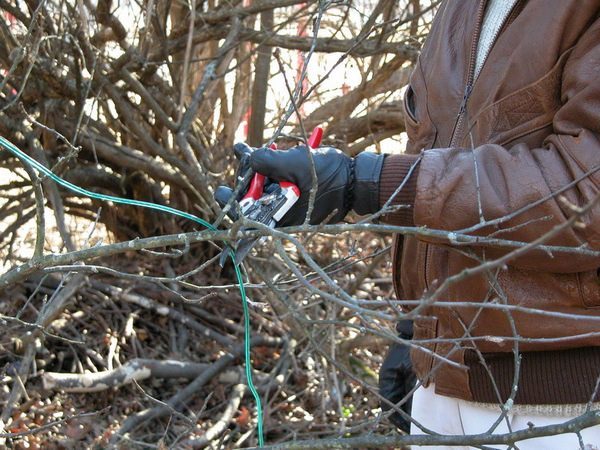 You may be interested in:
You may be interested in:This species includes varieties:
- Flava
- Early;
- Flamenco.
They differ in the duration of flowering and the period of dissolution of the buds.
The Chinese large-flowered variety is presented as a vine without air roots. Correlated to lianas in appearance due to the fact that it is attached to supports and surfaces due to processes.On the petiole there are 7-8 paired leaves with a length of up to 6 cm, the edge is completely absent. The flowers have a narrow tube, the length is not more than 8 cm, they are painted in orange. Shoots are small in comparison with the rooting species. It tolerates a short-term decrease in temperature to -18 degrees, but prefers a warm winter.
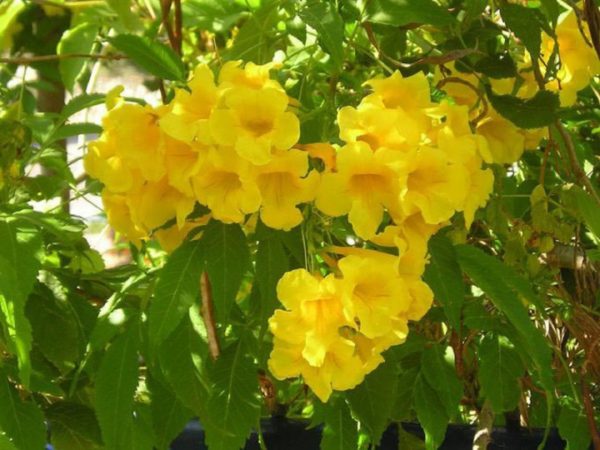
Hybrid - a young variety of plants with large flowers and a flexible vine, reaching no more than 6 m in length. Madame Galen is often grown in Russia. It is a sweeping bush with large orange-red flowers. This variety is used for landscaping summer cottages, because it is the most unpretentious, tolerates frosts well.
Campsite Landing
Kampis is thermophilic, because in areas with a temperate climate it is better to plant it in open ground in mid-May. For planting, the plants choose the most illuminated and protected from the wind site. Gardeners do not recommend planting a plant near residential buildings, because it creates a dense shadow and attracts insects.
The plant does not have special requirements for the soil mixture, but it will bloom profusely only on fertile soil, with a slightly acidic or neutral acidity level. If the land on the site is not fertile, it must first be prepared. To do this, dig a recess, arrange drainage from expanded clay or gravel, mix the selected soil with compost or humus in proportion to one average hole of 5 kg, add mineral fertilizer. The resulting area is watered. The place can be used for planting crops after 2 weeks.
The plant is best planted in the ground in April-May. When the soil is warm enough, the planting of campsis in the fall can lead to the death of the plant due to early cold. After planting, the seedling is watered, and the soil in the hole is mulched with peat. You can plant a bush on the fence - to form a green hedge. If the bush is planted on the site, additionally establish a support. It is necessary to take into account the variety of the plant and its possible height.
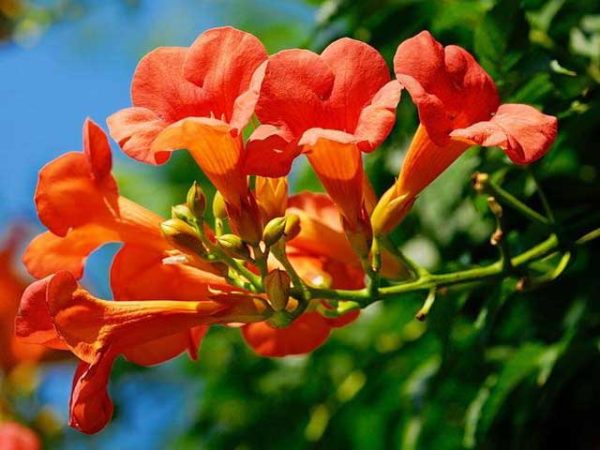
How to care for a campsite: basic principles of success
Caring for an exotic shrub is simple, but you need to know the basic rules:
- watering as the soil dries, during the rainy season, additional moisture is not required, the plant tolerates a lack of water better than its excess;
- periodic top dressing - a complex fertilizer in the growing season is applied under the bush 1 time in 2 weeks;
- processing - the plant is examined for pests and diseases 1 time per week, if detected, take measures;
- soil cleaning from weed grass;
- pruning - sanitary and forming plant pruning is carried out, sanitary - on demand, shaping - annually.
Despite the fact that the liana tolerates frost well, it should not be tested for frost resistance, especially in the regions located in the northern part of Russia. A bush can hibernate without shelter in the south of the country, if weather forecasters predict light frosts, without a long-term decrease in temperatures.
Reasonable watering and top dressing
All vines tolerate drought and feel bad when the soil is excessively moistened. Watering needs to be adjusted in such a way that not only the top of the soil, but also the entire root system has time to dry, in order to simplify the process and avoid overflow, gardeners recommend doing good drainage, pouring a 2 cm layer of expanded clay on the bottom of each hole.
The plant tolerates drought well, but not during the flowering period. Drying of the soil can cause premature falling of the buds, therefore it is necessary to regulate the constancy of moisture. Adult plants with a powerful root system are watered once every 3 days, seedlings - more often, but not much.
Care of the campsis does not include mandatory nutrition. On fertile soils, the plant successfully develops without additional fertilizing. Despite this, for experienced flowering, experienced gardeners recommend fertilizing with a mineral fertilizer containing nitrogen and phosphorus once every 2 weeks during the growing season. You can use organics in the form of mullein, rotted manure or compost.
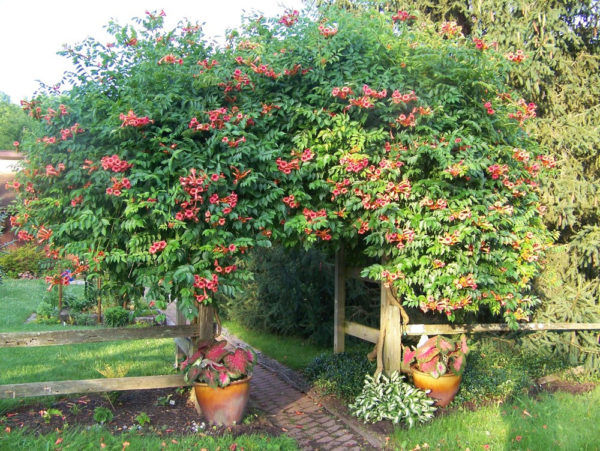
Pest and weed control
The plant needs periodic weeding of the near-trunk zone from weed grass. Gardeners claim that the plant has good endurance, tolerates temperature extremes. It is rarely affected by bacterial and viral infections. Fungal rot may progress due to overflow. For treatment, use any antifungal drug that spills the soil.
In hot time, the aphid parasitizes on the leaves of the plant, which sucks the juices of campsis and causes damage to it. It will get rid of the parasite, laundry soap and instektsidny compounds helps. Processing in the summer can be carried out for the purpose of prevention in order to prevent the invasion of an insect.
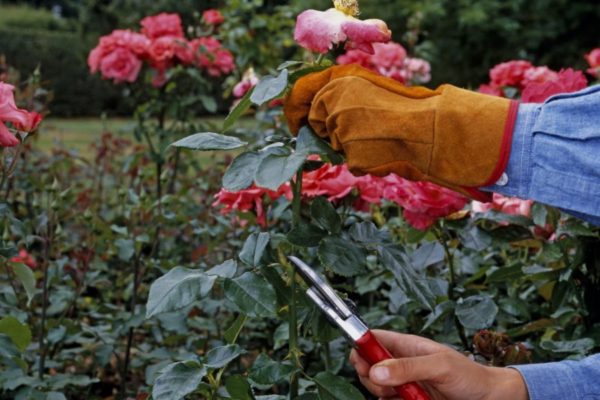 You may be interested in:
You may be interested in:Planned plant pruning
Campsis pruning is carried out in spring or autumn. Florists recommend pruning after the end of the growing season. All weak shoots are removed from the bush, while strong shoots are cut to 4 buds. Shoots by this principle are removed 2-3 times a season. This condition will ensure the active formation of new branches and the expansion of the crown of the plant.
Mandatory pruning is performed early in the spring before the development of the kidneys. On the bush, several shoots of large sizes are determined and a crown is formed, the rest are removed using a secateurs or delimbers. After the liana gives new shoots, they are directed down to the support.
This procedure is repeated 2-3 times a year for 4-5 years. During this period, the branches will stretch to the desired size to form a plant in the form of a tree or bush. Anti-aging pruning in spring or autumn includes cutting old shoots and shortening medium-mature ones. In the spring, a sanitary haircut is carried out, during which the affected, rotten and broken branches are removed.
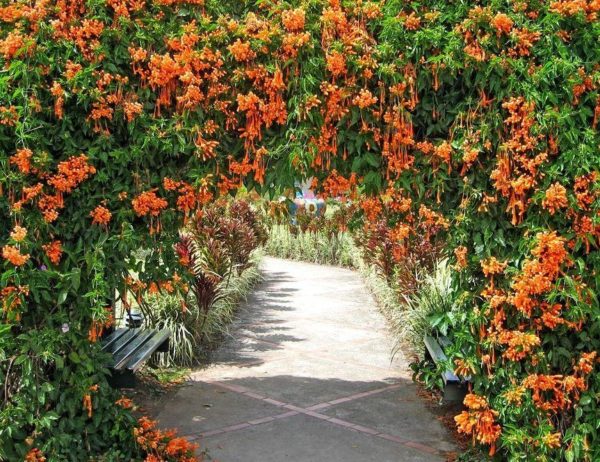
How to cook for winter
Despite the fact that the warm climate for the plant is native, the liana successfully tolerates frosts, but in central Russia and in conditions of more severe frosts, it needs additional protection. After the green mass comes off the branches, they are removed from the support and laid on the ground. For shelter using different materials, spruce branches, hay, sawdust or dry grass.
A thin plastic film is placed on top, which is stretched along the ground and covered with bricks. If the plant tightly wraps around a fence or arch, its roots are covered with sand or other material, and the shoots are wrapped in polyethylene.
Breeding
The most popular option is reproduction by layering. To ensure that they select several dense rhizomes and cover them with soil at a distance. The root is fixed with a wire or stone. The buried part is looked after separately - it is best to place it in a lighted place and water it well. The process can be considered completed after the formation of a segment of its own root system. The layer is sedimented from the mother plant in the spring, until the juice moves through the system.Slices sprinkled with fungicides for the prevention of rot. Transplantation to a permanent place is carried out 3-4 days after the cut-off from the mother plant.An equally popular breeding process that excludes all risks for the mother plant is cuttings. As cuttings use green and lignified shoots of plants obtained during pruning. The rooting process lasts a long time, but after planting a plant in open ground its death is excluded. The resulting cuttings are soaked in a solution of the root stimulant and planted in separate glasses with fertile soil. Contain in a lighted place, regularly watered. The rooting process takes about 3 months. You can plant a seedling in open ground after the root system braids the glass completely. Transplant the plant immediately to a permanent place. Rooting cuttings immediately in open ground is not recommended due to the high percentage of death of planting material.
We form a crown by cropping
Trimming the campsis for uniform formation is better in the fall, before the onset of frost. Gardeners operate according to the scheme:
- In a young plant, 3 fully formed, mature shoots are selected, and the rest are removed by secateurs in the fall.
- To form the crown of the plant, the branches during the growing season are tied to a support and sent in the right direction.
- This process is repeated 4-5 years in a row until the formation of a massive vine.
- During the growing season, faded flowers are removed in a timely manner and branches are shortened by 10 cm.
Anti-aging pruning involves removal of 60% of the branches.
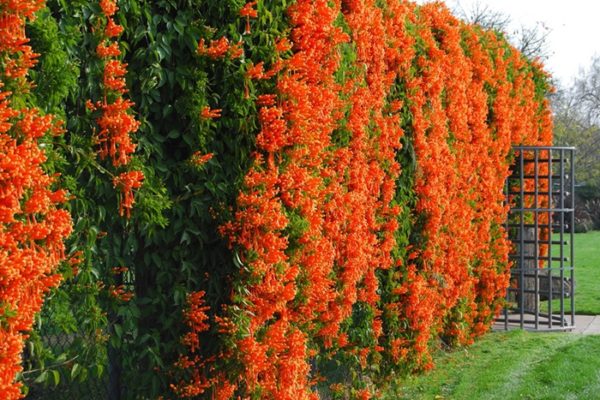
Preparation for winter
When preparing a vine for winter, you need to consider the following conditions:
- after flowering is reduced watering;
- make the last feeding for the season;
- treat the bush from pests;
- carry out sanitary or shaping pruning;
- provide reliable shelter.
Campsite shelter for the winter
It becomes more difficult to harbor a growing campis every year, because it grows in size, attaches more tightly to a support and grows. To simplify this process, you need to carefully consider the creation of a supporting structure - it is important to be able to easily put it into a shelter with the plant.
Shelter of a young bush is not difficult. If the shoots are not lignified, they simply remove it from the support, mulch the soil, cover the aerial part and cover it with polyethylene. Under the primitive construction, the liana successfully waits for the winter cold.
Young plant
A young bush located on an unbendable support is removed from it and laid on the ground. Carefully examine for pests before “sealing”. If the shoots are large and rise above the ground, they are fixed with brackets. From above, the aerial part is covered with spruce branches or covered with straw. This composition is coated with openings or nonwoven polyethylene. In the spring, the structure is removed gradually, allowing the branches to get used to the heat and sunlight.
Adult campsis
It is difficult to remove the hardened branches of the liana from the support, because the plant will have to be insulated in the original version. In this case, the soil is mulched and additionally covered with plastic wrap, providing a snug fit. The branches are wrapped with covering material, such as lutrasil or spandond. The main trunk of the bush is covered with polyethylene.
Plant supports
Immediately after planting the cuttings in the open ground, you need to think about creating a good support for it. The plant needs to be tied up regularly. It is better if the support is removable, because the plant is characterized by rapid growth and the formation of tight, massive lashes. For the device of support, they use a dense wire or tight ropes. They can be placed with a ladder, or change the shape depending on the landscape.
A removable support is needed because in winter the plant will have to be laid in shelter with it. As a support, often use lattices of a verandah, a fence of the house or arbors.
The arch, created on a personal plot, more often acts as a support. The green corridor in the form of an arch stretching from the gates of the house to the gazebo looks advantageous. This will require several metal rods that are bent in the shape of an arch and placed at a distance of up to 0.5 m from each other. Campsis is planted on each side of each rod. If the planting was carried out at the end of spring, then by the end of summer the plants will completely weave their supports. The difficulty in this case lies only in shelter for the winter.
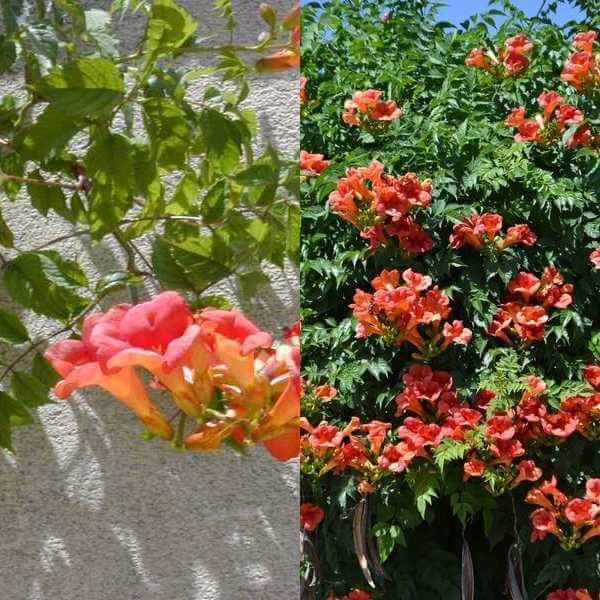
Campsite Use in Landscaping
Planting a campsite to decorate the landscape of a country house is a great solution. Liana is a fast-growing, has a strong stem, which in five-year-old plants is similar to the trunk of a small tree.
Since many varieties of the plant have aerial roots, it clings to all kinds of structures, creating a green hedge. In landscape design, it is used for landscaping arbors and other structures.
The plant is suitable for people who do not want to spend a lot of time on care. Fast growing vine, requires watering. Fertilizing and shelter for the winter in some regions. It is rarely affected by pests and can tolerate drought.
Finally
It is possible to grow a huge vine without difficulty on your site. It is enough to buy a campsis seedling and provide it with proper care. Unlike many representatives of the tropics, this plant does not have outstanding requirements for temperature, light and soil composition. With regular pruning and fertilizing, the bush is successfully formed and quickly turns into a green hedge.

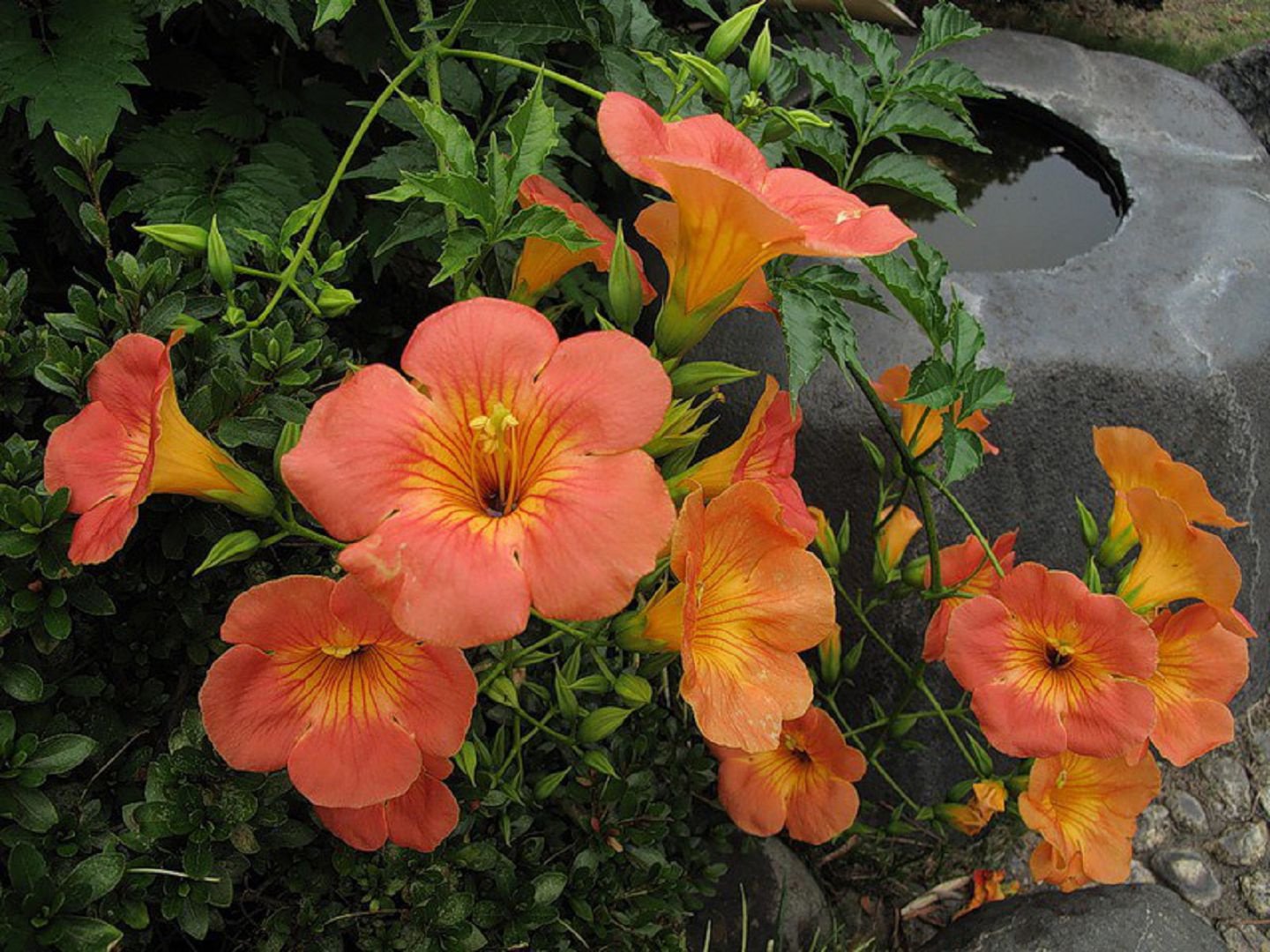
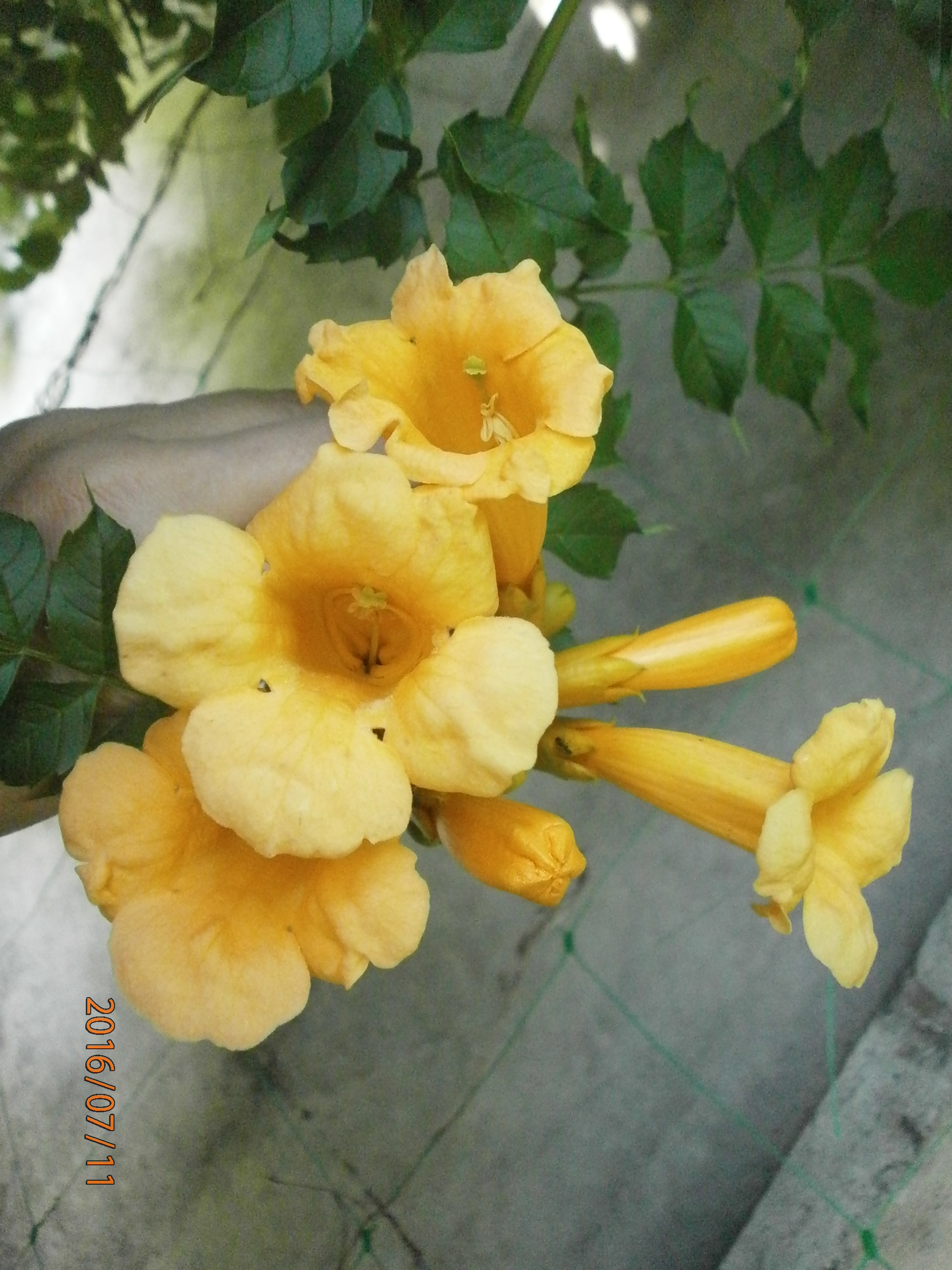
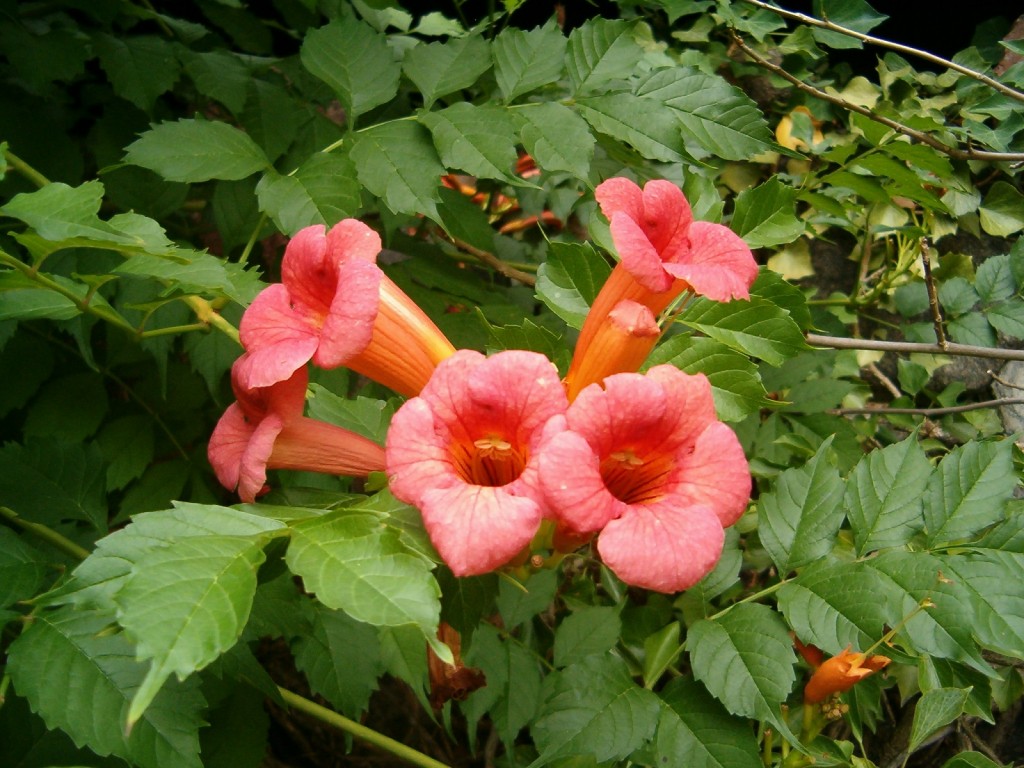
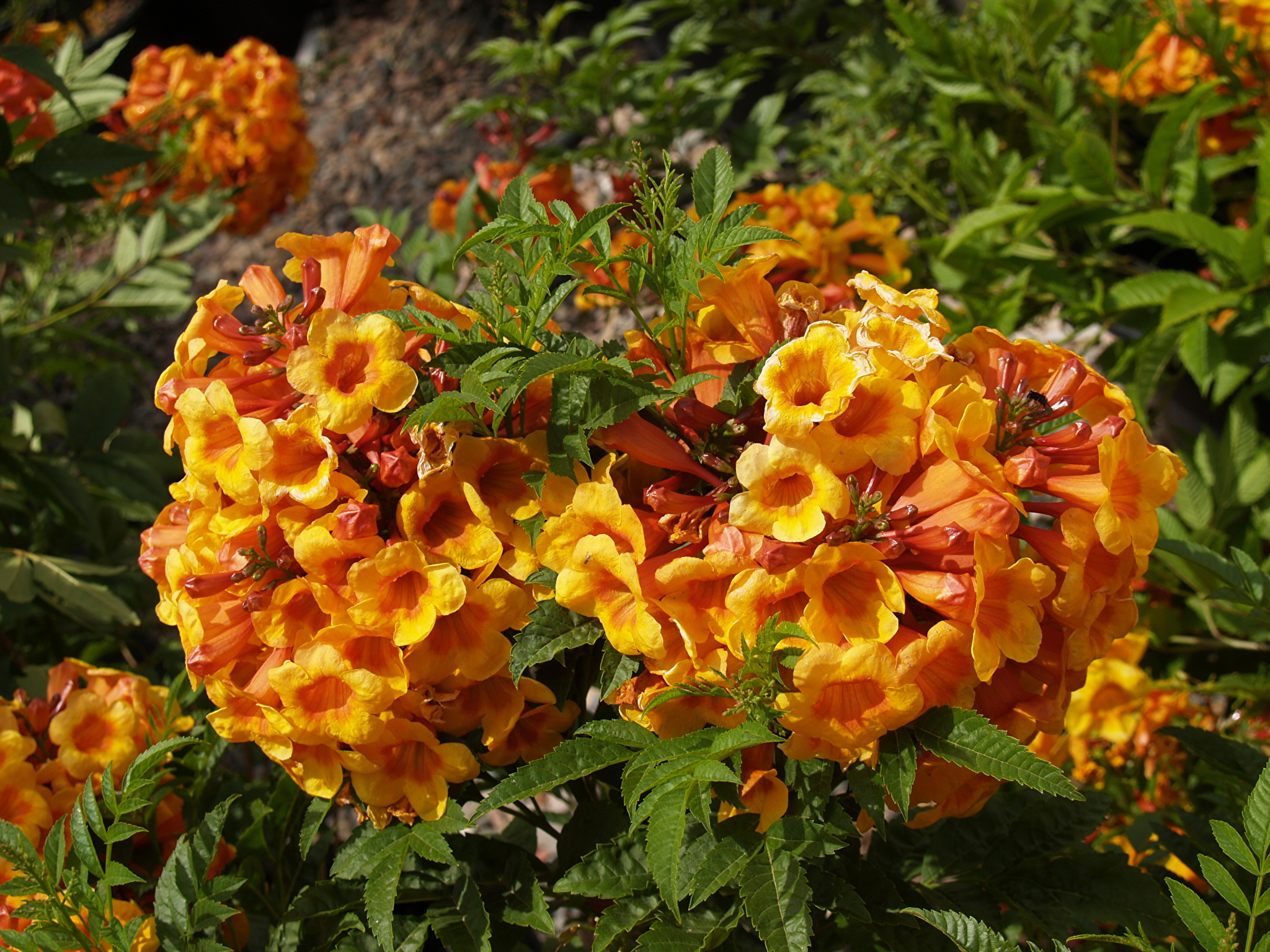
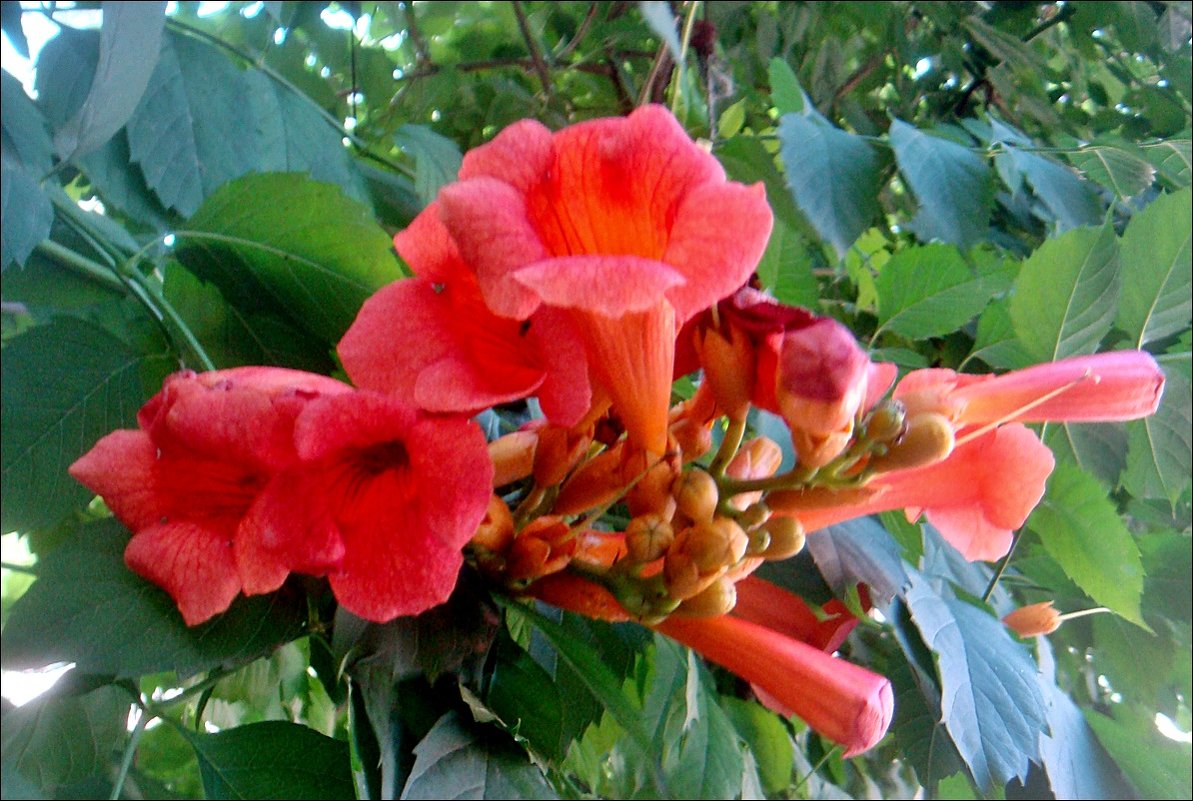
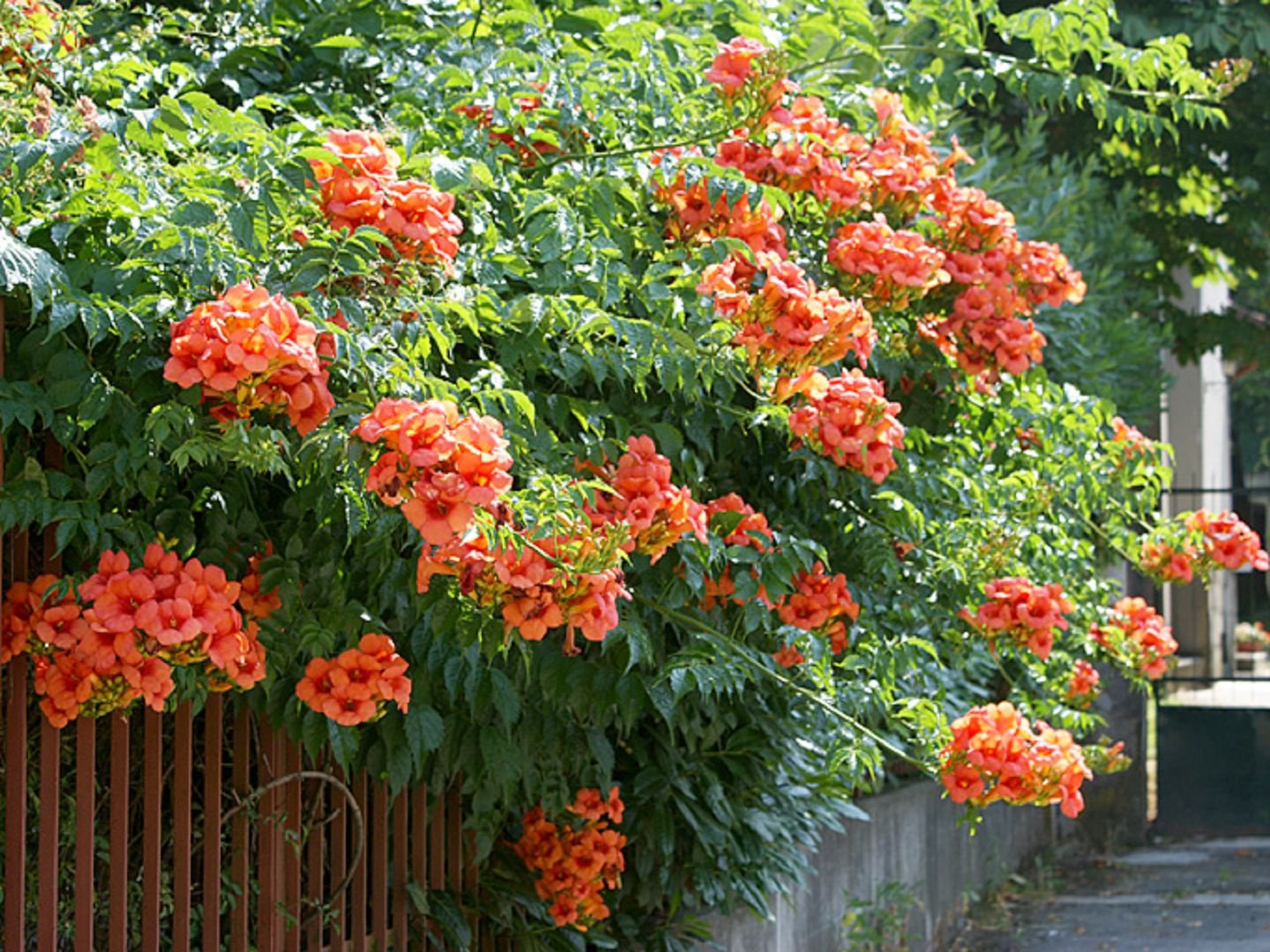
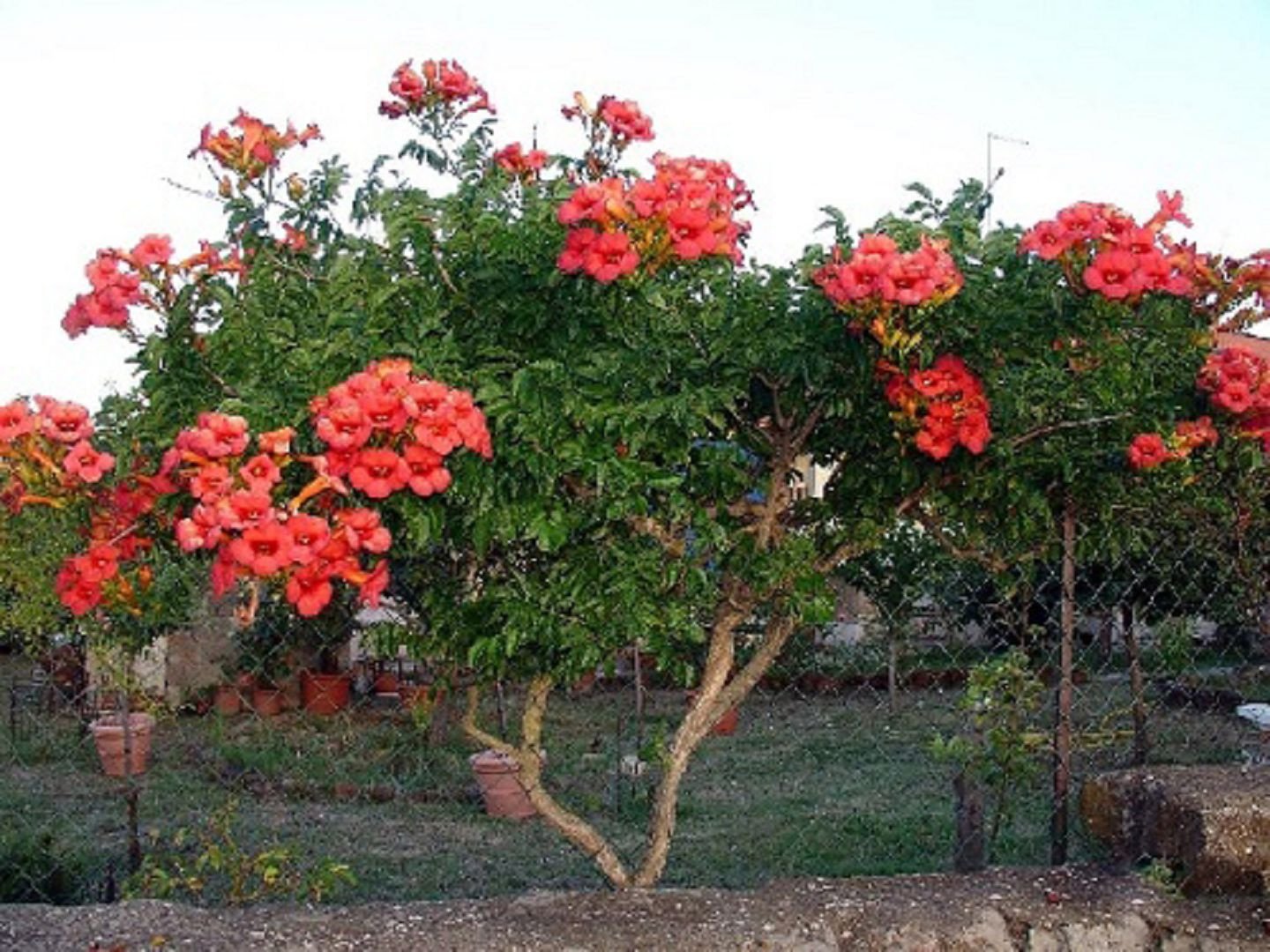

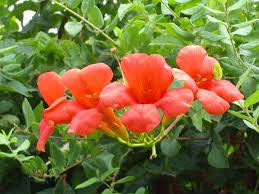
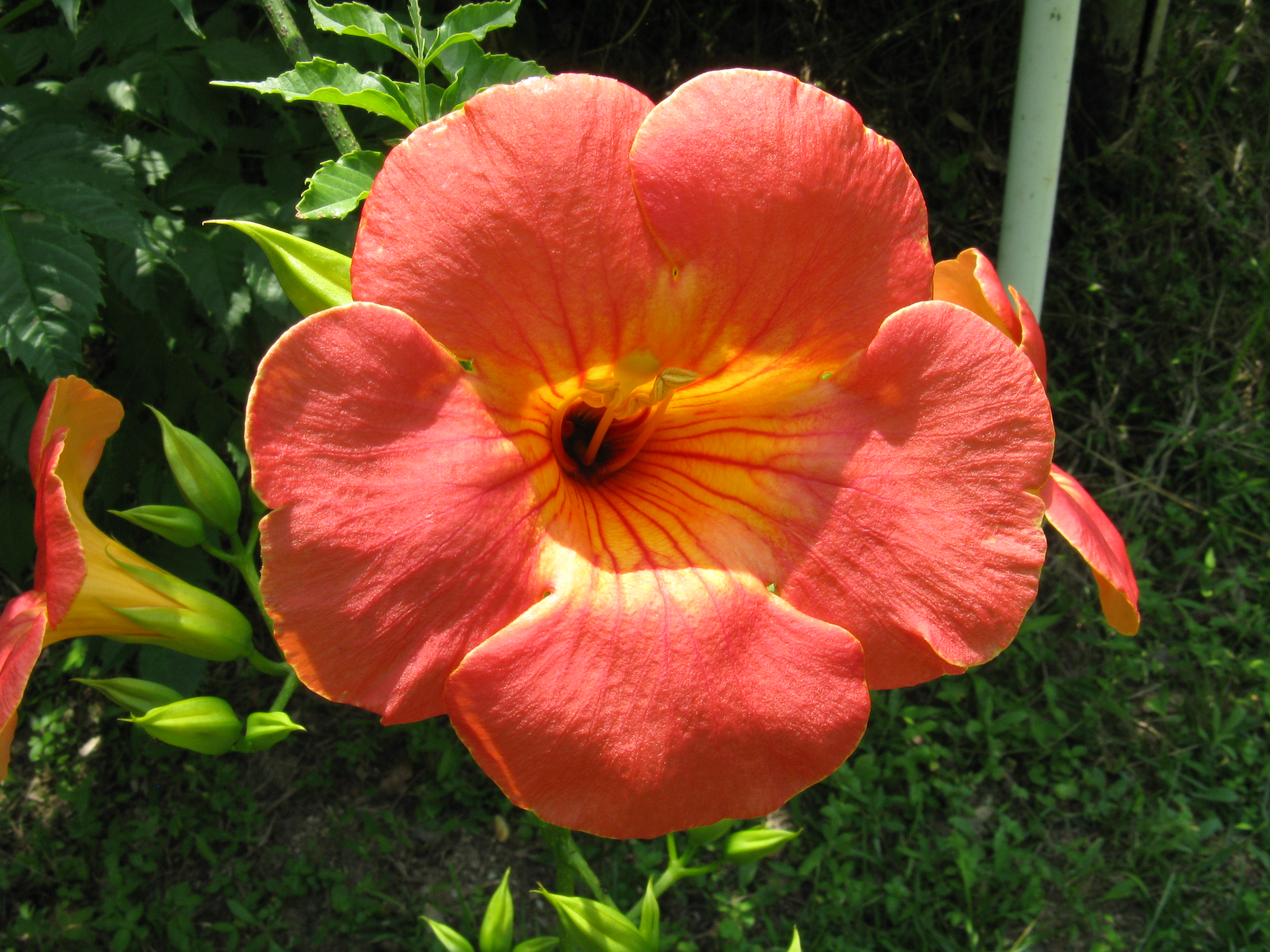
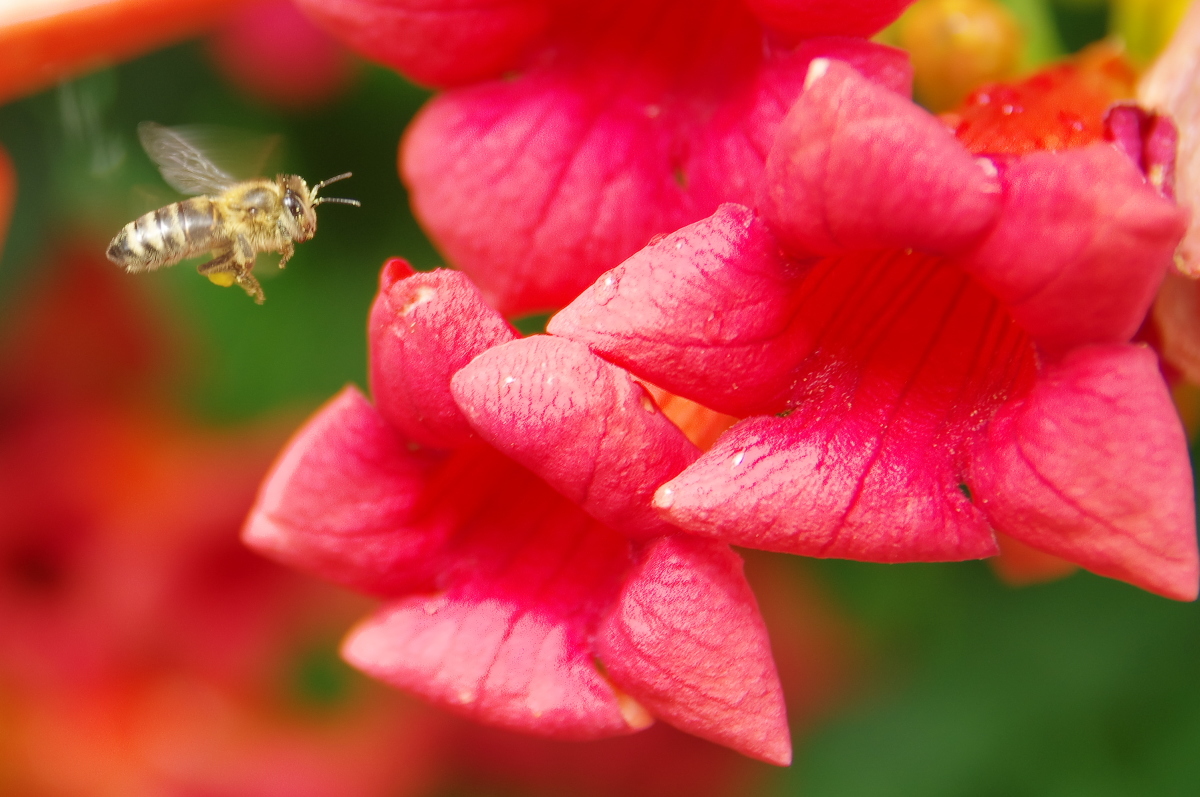

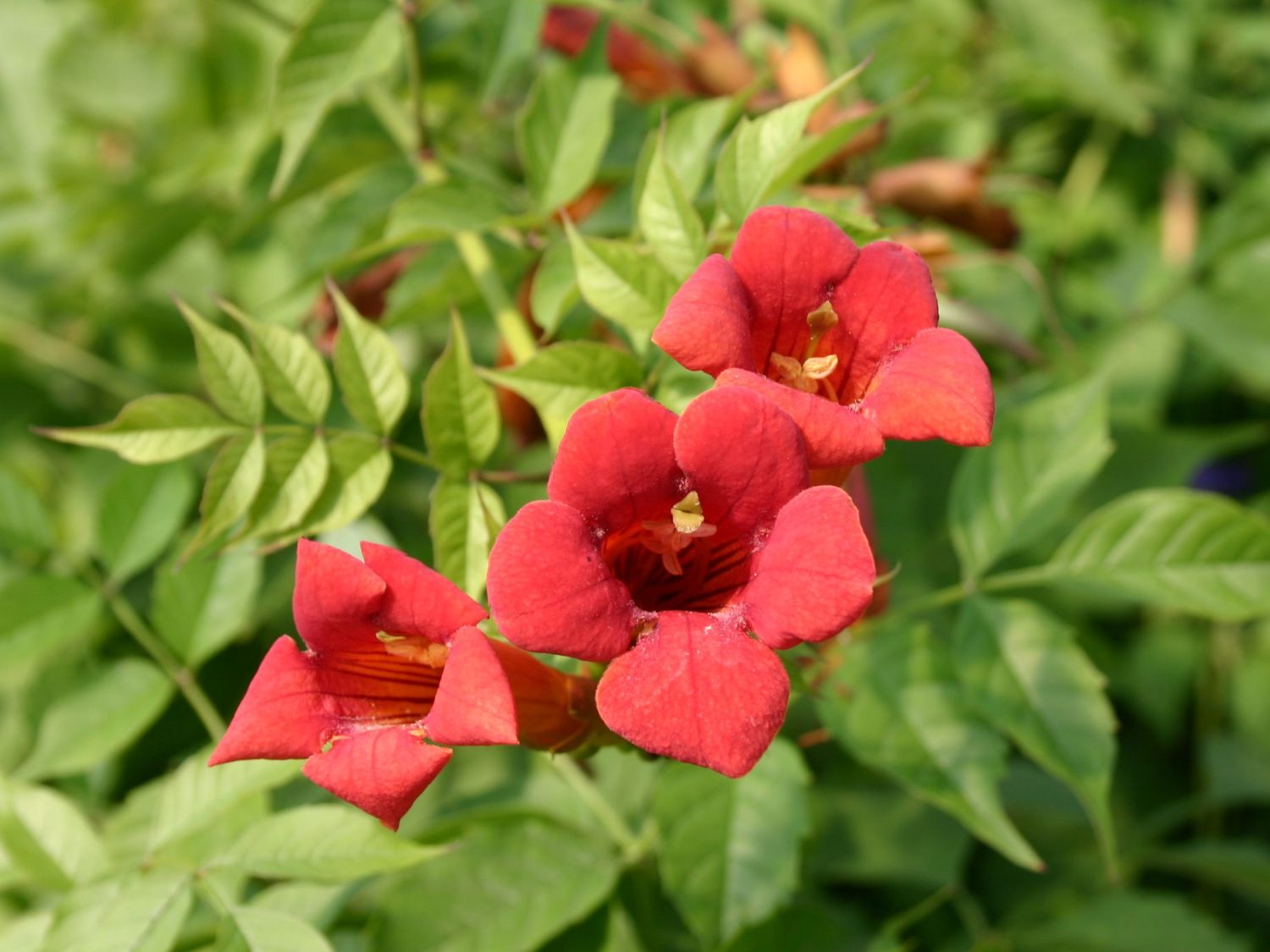



 10 beautiful annuals that bloom all summer
10 beautiful annuals that bloom all summer Sow in the ground, without seedlings: 10 beautiful and unpretentious flowers
Sow in the ground, without seedlings: 10 beautiful and unpretentious flowers Platicodon planting and outdoor care
Platicodon planting and outdoor care Hosta - planting and care in the open ground in the Urals
Hosta - planting and care in the open ground in the Urals